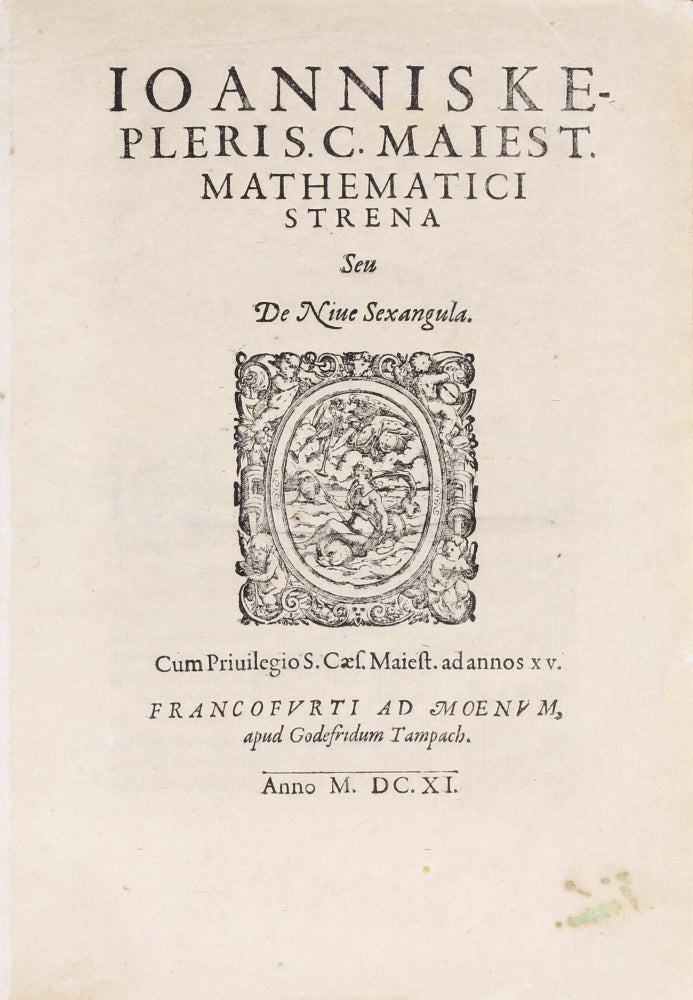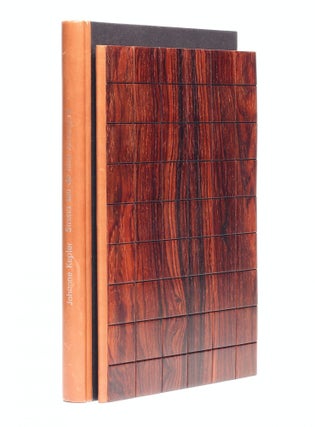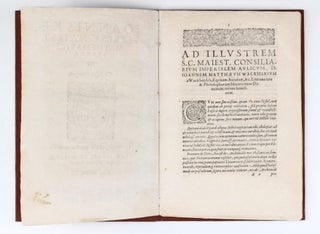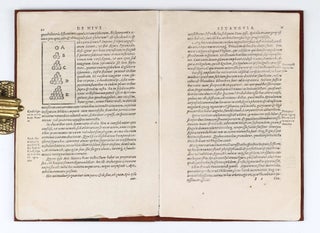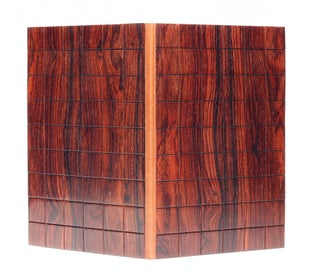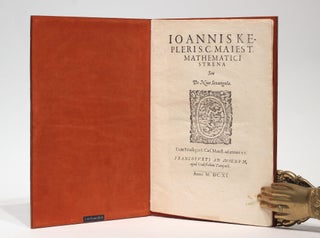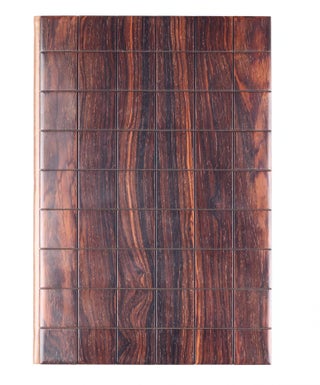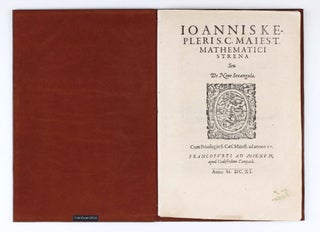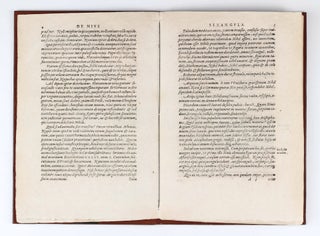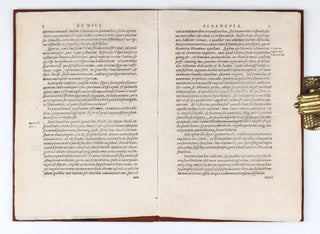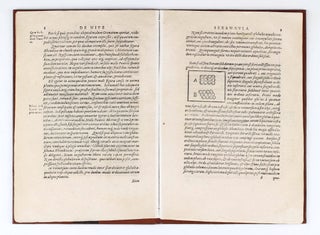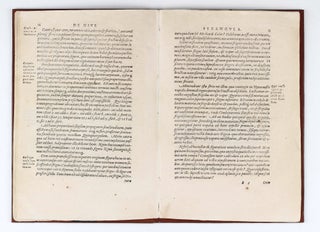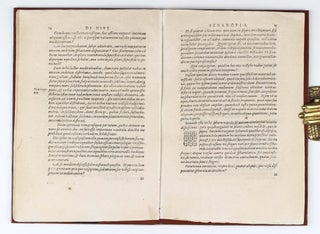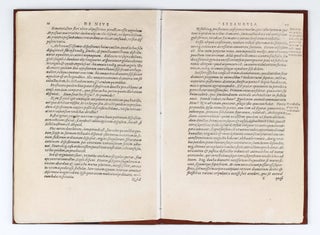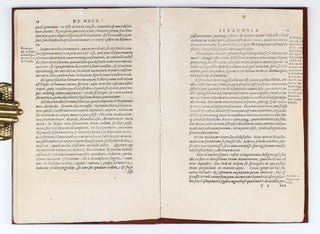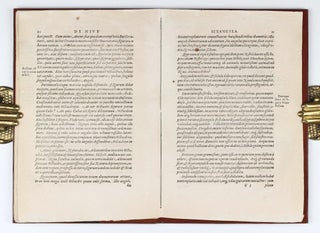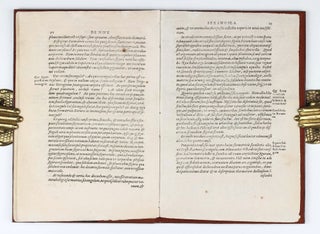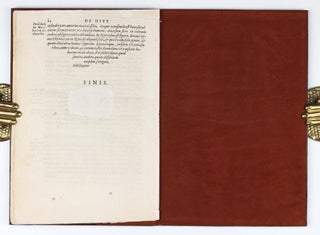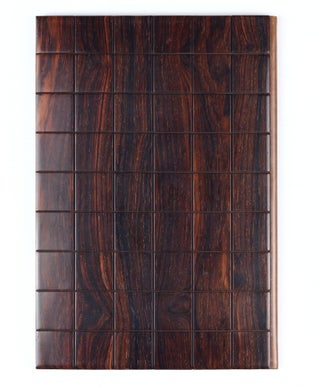A fundamental work on crystallography
Strena seu de Nive sexangula.
Frankfurt am Main: Godfried Tampach, 1611.
1st Edition. Hardcover. Very Good. Item #003293
4to (225 x 154 mm). [2], 1, 4-24 pp. Signatures: a-c4. Woodcut printer's device on title, 3 woodcut text illustrations, woodcut headpiece and initial. Lower margin partially uncut. Bound in modern boards of diced tropical wood, calfskin spine, reverse lambskin pastedowns, no free endpapers, protected in clamshell box. Text only very little browned, a few brown spots in places, title and final page with erased old ownership entry (caused thinning on final page repaired with paper, no text loss), pp. 17 and 19 trimmed close at fore-margin just touching sidenotes. Provenance: Jean de Gonet (sticker on front pastedown). An exceptionally well preserved, crisp, clean and tall copy. ----
RARE FIRST EDITION OF A FUNDAMENTAL WORK ON CRYSTALLOGRAPHY. Kepler composed the Strena in the form of letter and as a New Year's gift for a friend at court, Counselor Wackher von Wackhenfels. In it, he ponders the problem of why snowflakes are hexagonal. His work here was completed long before the solution was discovered by Rasmus Bartholin in 1669, and Romé de l'Isle in 1672. "It is not only a charming letter, lighthearted and full of puns, but also a perceptive, pioneering study of the regular arrangements and the close packing that are fundamental in crystallography" (DSB).
Kepler adduces various examples of hexagonal patterns from the natural world of geometric construction or packing - bee-hives, pomegranates, pea-pods etc. He writes: "For in general equal spheres (globi) when collected in any vessel, come to a mutual arrangement in two modes according to the two modes of arranging them in a plane. If equal spheres are loose in the same horizontal plane and you drive them together so tightly that they touch each other, they come together either in a three-cornered or in a four-cornered pattern. In the former case six surround one; in the latter four. Throughout there is the same pattern of contact between all the pellets except the outermost. With a five-sided pattern uniformity cannot be maintained. A six-sided pattern breaks up into three-sided. Thus there are only the two patterns as described. "Now if you proceed to pack the solid bodies as tightly as possible, and set the files that are first arranged on the level on top of others, layer on layer, the pellets will be either squared, or in triangles. If squared, either each single sphere of the upper range will rest on a single sphere of the lower, or, on the other hand, each single sphere of the upper range will settle between every four of the lower. In the former mode any sphere is touched by four neighbours in the same plane, and by one above and one below, and so on throughout, each touched by six others. The arrangement will be cubic, and the spheres, when subjected to pressure, will become cubes. But this will not be the tightest pack. In the second mode not only is every sphere touched by its four neighbours in the same plane, but also by four in the plane above and by four below, and so throughout one will be touched by twelve, and under pressure spherical spheres will become rhomboid. This arrangement will be more comparable to the octahedron and pyramid. This arrangement will be the tightest possible, so that in no other arrangement could more pellets be stuffed into the same container" (Denis Weaire, Tomaso Aste, The Pursuit of Perfect Packing, CRC Press, 2008, p.15-16). This is what is called the "Kepler conjecture". This natural method of stacking the spheres creates one of two similar patterns called cubic close packing and hexagonal close packing. The Kepler conjecture says that this is the best that can be done - no other arrangement of spheres has a higher average density than this. . . References: Caspar Bibliographia Kepleriana 39; Honeyman sale 1786; O. Gingerich, The delights of a roving mind. In: Nims, The Six-Cornered Snowflake, 2010. - Visit our website for additional images and information!
Sold
Delivery time up to 10 days. For calculation of the latest delivery date, follow the link: Delivery times
Lieferzeit max. 10 Tage. Zur Berechnung des spätesten Liefertermins siehe hier: Lieferzeiten


